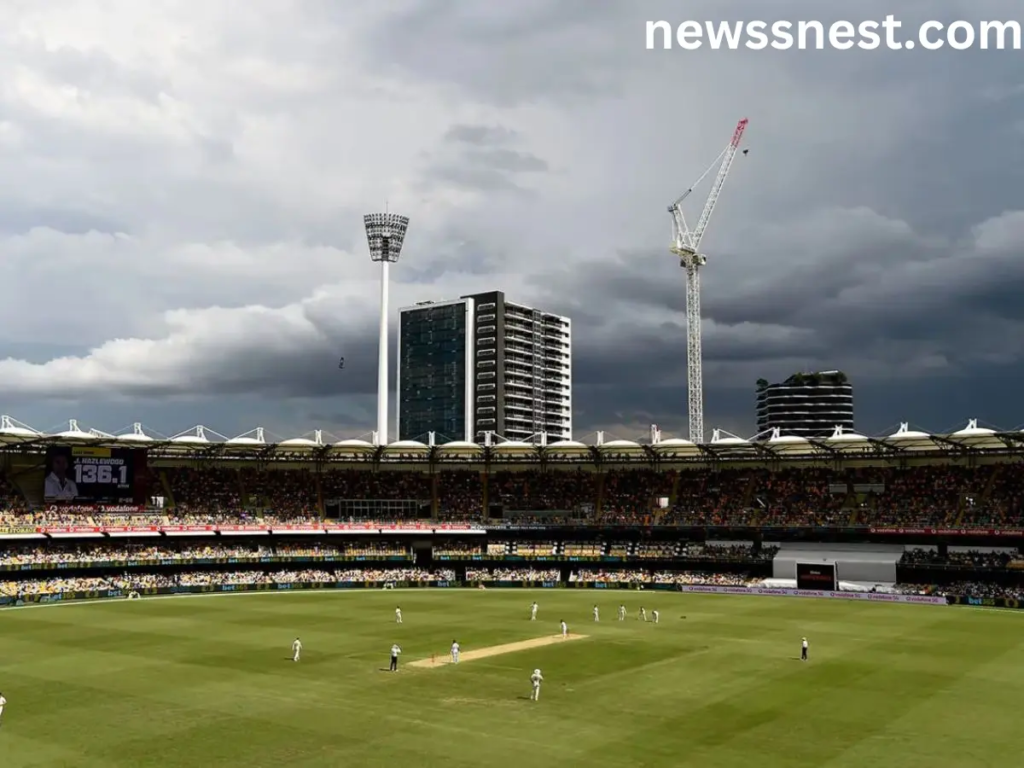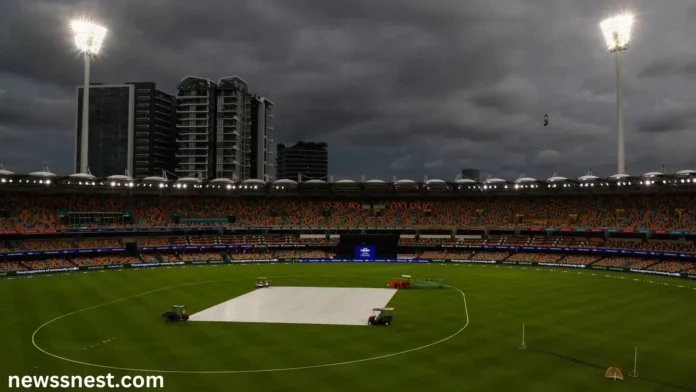The weather in Brisbane, particularly around the famous sporting venue, The Gabba, plays an essential role in how the city operates. From cricket matches to AFL games and other outdoor events, understanding the climate and seasonal patterns of this area is crucial for both residents and visitors. This guide will provide you with in-depth insights into the typical weather patterns, seasonal changes, and how the environment around The Gabba affects daily life and events.
Overview of Brisbane’s Climate
A Subtropical Climate
Brisbane, the capital of Queensland, has a subtropical climate, characterized by hot, humid summers and mild, dry winters. The city enjoys moderate temperatures and clear skies for much of the year. This climate makes Brisbane a popular destination for outdoor activities, as well as sporting events in the open-air stadiums like The Gabba.
The proximity of Brisbane to the Pacific Ocean means that it experiences warm temperatures throughout the year. Its geographical location further contributes to its comfortable, balmy weather, which can be a significant draw for tourists.
The Gabba’s Location and Its Impact on Weather Conditions
Located in Woolloongabba, an inner suburb of Brisbane, The Gabba benefits from the city’s overall subtropical climate. However, as with any major city, the microclimate around specific areas like The Gabba can slightly differ from the general climate in other parts of Brisbane. The proximity of The Gabba to the Brisbane River can also influence localized weather conditions such as humidity, temperature variations, and wind patterns.
Overview of wpial football news
Seasonal Weather Patterns in Brisbane
Summer: December to February
Hot and Humid Conditions
Summer in Brisbane can be sweltering, with average highs ranging from 29°C to 30°C (84°F to 86°F). The humidity levels are high, often exceeding 60%, which can make the weather feel even hotter. This humidity, combined with afternoon thunderstorms, is typical for this season.
For outdoor events at The Gabba during the summer months, the heat and humidity can be challenging for spectators and athletes alike. With a cricket match or AFL game underway, the weather can affect the comfort of those in attendance, requiring ample hydration and occasional relief from the sun.
Afternoon Thunderstorms
Summer afternoons often bring brief but intense thunderstorms, which are a regular occurrence in Brisbane. These storms are typically short-lived but can be heavy, bringing rainfall, lightning, and gusty winds. For sports events at The Gabba, these unpredictable storms can delay or disrupt games, requiring contingency plans to ensure the safety of the participants and audience.
Autumn: March to May
Comfortable Temperatures
Autumn in Brisbane is one of the most pleasant seasons, with average temperatures ranging from 21°C to 26°C (70°F to 79°F). The humidity levels begin to decrease, making the weather more comfortable for outdoor activities. These months are ideal for watching games at The Gabba, as the oppressive heat of summer has subsided.
Reduced Rainfall
While Brisbane still experiences rainfall during the autumn months, the frequency of thunderstorms and heavy showers diminishes compared to summer. The weather in the Gabba area becomes drier, offering more stable conditions for both athletes and spectators. For cricket lovers, this is the best time of the year for matches as conditions improve for the sport.

Overview of real madrid cf formation
Winter: June to August
Mild and Dry Conditions
Winter in Brisbane is relatively mild compared to other parts of the world, with average temperatures ranging from 10°C to 21°C (50°F to 70°F). Rainfall is scarce, and the city enjoys plenty of sunshine during this season. The cool, dry air makes outdoor activities more comfortable, and it’s an excellent time for visitors to enjoy a sporting event at The Gabba.
Ideal Conditions for Sports
With cooler temperatures and minimal rainfall, winter is arguably the best season for attending outdoor sporting events. Whether it’s an AFL match or a cricket game, the lack of humidity and the absence of thunderstorms mean that athletes can perform at their best, and fans can enjoy the games in comfort.
Spring: September to November
Warming Temperatures
Spring is a transition period as the temperatures begin to rise, with average highs ranging from 24°C to 28°C (75°F to 82°F). It marks the return of warmer conditions, but it’s still cooler than the scorching summer heat. Humidity levels also begin to climb again, though they remain lower than in the summer months.
Increased Rainfall and Storms
Rainfall begins to increase during spring, especially towards November, which brings with it the potential for the occasional thunderstorm. While not as frequent or intense as summer storms, these showers can still affect outdoor events at The Gabba. Fans attending games during this time should prepare for the possibility of brief rainfall.
The Impact of Weather on Sporting Events at The Gabba
Cricket Matches and Summer Weather
The Gabba is renowned as one of the most iconic cricket grounds in Australia, and the summer weather can have a significant impact on matches. The high humidity and thunderstorms can make playing conditions challenging for cricketers, with the potential for delays or interruptions due to rain. However, the warm temperatures also allow for longer days of play, as matches can be scheduled for extended periods to accommodate weather disruptions.
AFL Games in Mild Winter Conditions
When the winter months arrive, The Gabba becomes the perfect venue for AFL matches, as the cooler, dry air enhances the playing experience. The absence of heavy rain or extreme humidity allows players to maintain high energy levels, and spectators can enjoy the match without feeling uncomfortable. The mild winter conditions are conducive to a great atmosphere at the stadium, with fans remaining comfortable throughout the game.
Overview of real madrid cf formation
Thunderstorms and Event Planning
Given Brisbane’s tendency to experience sudden thunderstorms, event organizers at The Gabba must be prepared for these unpredictable weather events. Rain delays, lightning concerns, and wind gusts can all disrupt proceedings, and contingency plans must be in place to ensure the safety of players and fans.
Climate Adaptations and Strategies for Attendees
Dress for the Weather
When attending an event at The Gabba, it’s important to dress appropriately for the weather. During summer, light, breathable clothing is essential, along with sunscreen to protect against the intense sun. In the winter months, fans should bring a light jacket or sweater to stay comfortable as temperatures cool in the evening.
Hydration and Protection from the Sun
In the summer months, staying hydrated and protecting yourself from the sun is critical. Bring water bottles to avoid dehydration, and seek shade when possible to prevent sunburn. Stadiums like The Gabba often have water stations, but it’s a good idea to come prepared.
Conclusion
The weather in Brisbane, especially around The Gabba, offers a wide variety of conditions throughout the year, each influencing the outdoor events that take place in this vibrant city. From the hot and humid summer months to the mild and dry winter, the climate plays a vital role in shaping the experience of both athletes and spectators. Whether attending a cricket match or an AFL game, understanding the seasonal changes and preparing for the weather can significantly enhance your visit to The Gabba.
For more great updates, keep visiting newssnest.com


Your article helped me a lot, is there any more related content? Thanks!
Thank you for your sharing. I am worried that I lack creative ideas. It is your article that makes me full of hope. Thank you. But, I have a question, can you help me?
Can you be more specific about the content of your article? After reading it, I still have some doubts. Hope you can help me.
Thanks for sharing. I read many of your blog posts, cool, your blog is very good.
Your article helped me a lot, is there any more related content? Thanks! https://accounts.binance.info/sl/register?ref=PORL8W0Z
I don’t think the title of your article matches the content lol. Just kidding, mainly because I had some doubts after reading the article.
Thank you for your sharing. I am worried that I lack creative ideas. It is your article that makes me full of hope. Thank you. But, I have a question, can you help me?
Thank you for your sharing. I am worried that I lack creative ideas. It is your article that makes me full of hope. Thank you. But, I have a question, can you help me?
Your article helped me a lot, is there any more related content? Thanks! https://accounts.binance.com/es-MX/register-person?ref=JHQQKNKN
Thanks for sharing. I read many of your blog posts, cool, your blog is very good.
I don’t think the title of your article matches the content lol. Just kidding, mainly because I had some doubts after reading the article.
Thank you for your sharing. I am worried that I lack creative ideas. It is your article that makes me full of hope. Thank you. But, I have a question, can you help me? https://accounts.binance.com/register-person?ref=P9L9FQKY
I don’t think the title of your article matches the content lol. Just kidding, mainly because I had some doubts after reading the article.
Thank you for your sharing. I am worried that I lack creative ideas. It is your article that makes me full of hope. Thank you. But, I have a question, can you help me?
Your point of view caught my eye and was very interesting. Thanks. I have a question for you.
I like the efforts you have put in this, regards for all the great content.
Can you be more specific about the content of your article? After reading it, I still have some doubts. Hope you can help me.
I don’t think the title of your article matches the content lol. Just kidding, mainly because I had some doubts after reading the article.
Your article helped me a lot, is there any more related content? Thanks! https://accounts.binance.info/en-IN/register-person?ref=UM6SMJM3
I don’t think the title of your article matches the content lol. Just kidding, mainly because I had some doubts after reading the article.
Thanks for sharing. I read many of your blog posts, cool, your blog is very good.
Your article helped me a lot, is there any more related content? Thanks!
Your point of view caught my eye and was very interesting. Thanks. I have a question for you.